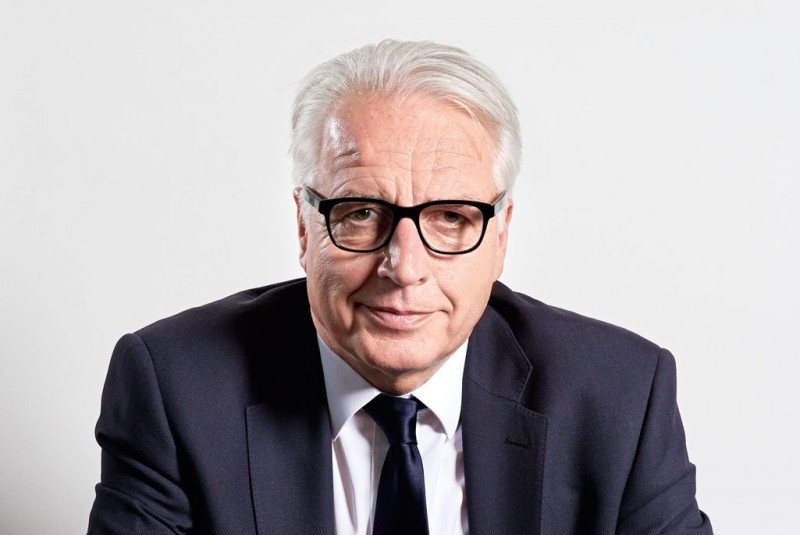Martin Roth, the former director of the Victoria & Albert Museum, has died at the age of 62. He led the museum from 2011–16, having previously held the positions of director general of the Dresden State Art Collections (2001–11) and director of the German Hygiene Museum in the same city (1991–2000). If his managerial style divided opinion at the V&A (and it is no secret that it did), then for many who knew him as the museum’s ambassador, myself included, he was an inspirational, beguiling figure. Martin was effortlessly charming, but serious with it: he always asked exacting questions that seemed designed to draw out honest opinions.
Martin was the first museum director I met when I started working at Apollo in 2012. As deputy editor of the magazine, I had travelled to Moscow on a press trip that the V&A had organised to promote an exhibition that would include major loans from the Kremlin Armoury. The trip coincided with the opening of a reciprocal loan exhibition at the Kremlin, for which Martin had flown out on one of the many glad-handing missions that fall to the modern museum director.
He joined the handful of journalists for breakfast and soon brushed aside small talk for a wide-ranging discussion about cultural diplomacy – informed by years of thinking through the political problems and possibilities of museums in Germany, and specifically the former East Germany – in which he challenged our presumptions but also seemed open to having his own tested. On this and other matters, he was an optimist but a realist, or perhaps the other way round, who believed firmly in the progressive potential of museums and their collections but who spoke frankly about their vulnerabilities and limitations. At the private view that evening, he edged away from the Kremlin crowd to continue the conversation with me and the V&A’s press officer.
In the years that followed, I frequently crossed paths with Martin and occasionally met him over coffee in his office in South Kensington. He always wanted to sing the praises of a young artist or designer or V&A staff member who had impressed him; he had no hesitation in joining the judging panel for the inaugural Apollo 40 Under 40. But the word that sticks with me from those conversations is debate – his belief that the museum must be a place of debate, and his invariable reminder that a magazine like Apollo should never shy away from it. In keeping with this, he seemed proud that ‘You Say You Want a Revolution?’ was the final major exhibition that he had opened at the V&A before his retirement last autumn.
That debate extended for him to the place of Britain in Europe, and of course to last year’s EU referendum, the result of which angered and saddened him greatly. He fretted about the uncertain future that the many EU citizens working at the V&A continue to face; he feared the damage that a populist victory here might inspire elsewhere in Europe; and he bemoaned the imaginative bankruptcy through which the cultural claims for the European project had been sidelined. In happier times, at the opening of the V&A’s Europe 1600–1815 galleries, Martin’s enthusiasm had been unmistakeable as he played MC to a string of European ambassadors, interleaving their platitudes with his own forthright case for the continuities of European culture. After the referendum, he regretted that he, along with other cultural leaders in this country, had not made this argument more loudly. ‘It was not a fair public debate,’ he told me after the V&A won the Art Fund Museum of the Year award last summer. ‘We should have done more in cultural institutions.’
But perhaps it was Martin’s European outlook, or at least the distance that being a foreign director brought, that made him seem aloof to some colleagues at the V&A. It was an irony that he worked with, restructuring the senior management of the museum and focusing on the museum’s expansions and international strategy. When I interviewed him for the V&A’s Annual Review in 2014, the assignment – the conceit amused him – was to concentrate on how his approach as a German overlapped with that of others whose ideas had been integral to the founding of the museum: among them Prince Albert, Gustav Waagen and Gottfried Semper. ‘Even if it means having to convince people’, he told me, ‘I’m able to look at things from a different cultural perspective, a different cultural background. Or perhaps not so much a different cultural background as just a different kind of management style.’
The last time I saw Martin, on his final day at the V&A last October, he told me that he didn’t think he’d come back to the museum for the grand opening of the Exhibition Road Quarter this summer. He was a great advocate of the project, which he had inherited from his predecessor and had seen to the brink of completion – but it was time for another director to make the speeches. Martin was planning to spend more time in Vancouver, he said, where he and his family owned a house that they loved to visit, and would be focusing on other projects, such as advising a charity in Germany that provides financial backing to arts events that would otherwise struggle for funding. He relished innovative ideas, and the opportunity to support them – and was convinced that the arts could contribute to building a better future.



